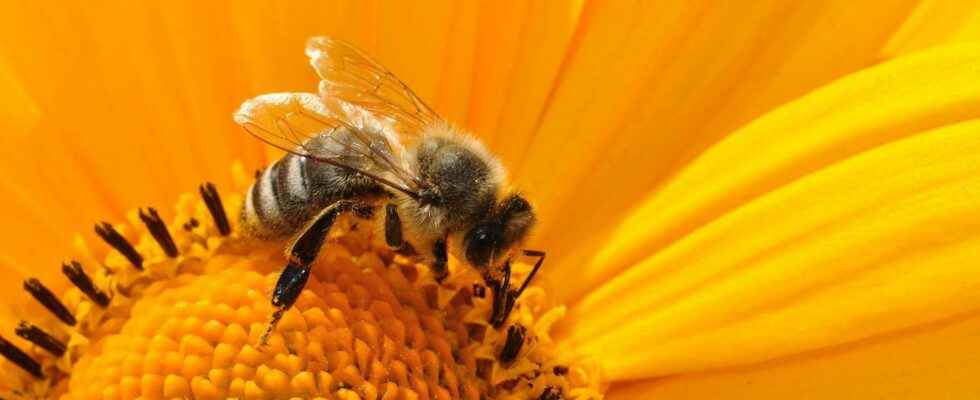A wild flora that tends to disappear. Gardens often too well maintained. Bees and other pollinators struggle to find food. However, the flowers that attract them are not lacking.
You will also be interested
[EN VIDÉO] How do bees make honey? Honey is one of the oldest ways to sweeten food. It is virtually imperishable and it takes a lot of bee work to make. Unisciel and the University of Lille 1 explain to us, with the Kézako program, the stages of its manufacture.
The bees — and other pollinators such as butterflies or bumblebees, for example — feed mainly on nectar and pollen they find in the flowers. A bit like us, they need to feed in a varied way and to forage on a wide variety ofspecies floral. All over the whole season.
Note also that all the flowers of interest from the point of view of the production of nectar or pollen are not accessible to all pollinating insects. The morphology of the flower must agree with that of the insect in question. Thus, for the butterflies and their large wings, the flowers with wide corolla are the most affordable. Bees prefer flowers with only one row of petals.
Weeds are not for everyone
the dandelion is generally likened to a bad grass. However, it is as interesting for us — its young shoots are particularly tender and tasty — as for the bees. In particular because its flowering begins between January and February. What to attract in your garden, the very first foragers.
The borage — which blooms between May and October — is also often considered a weed. But she is among the plants bees most attractive to both bees and butterflies.
Charles Turner was one of the first scientists to study animal intelligence and more particularly that of bees, discover his story! © Futura
Some aromatic plants
Rosemary is also one of these aromatic plants early flowering. Its pretty blue flowers appear in fact from the month of February. Bees are particularly fond of it.
With its small pale pink flowers, thyme delights bees in the garden between June and September.
The agastache, and its blue or mauve flowers, is likely to feed the bees — who seem to love it — from May until the first frosts.
In the trees
On the side of trees, the birch produces pollen particularly early, while the other flowers are still quite rare. It therefore tends to attract bees. Just as the willows first and the basswood then.
Obviously, all fruit treescherry trees, apple trees and plum trees in mind, will be gladly visited by bees.
Honeysuckle to attract butterflies
The particularity of honeysuckle — which flowers from June to September — is that its nectar hides in the hollow of its deep flowers. Only insects with long proboscis can forage on them. It will therefore particularly attract butterflies. And even moths.
Finally, note that beyond certain flowers that bees love, it is the layout of your garden as a whole that must be made attractive. Remember to reserve a few small water points for them: the bees also need to drink. Remember that trees are a great asset as they provide shade and also provide nectar. To avoid using chemicals that endanger the lives of bees, preferably opt for plants insecticides or repellent. dandelion, daisies Where nettle prove to be effective in protecting flowers nectariferous.
Interested in what you just read?
